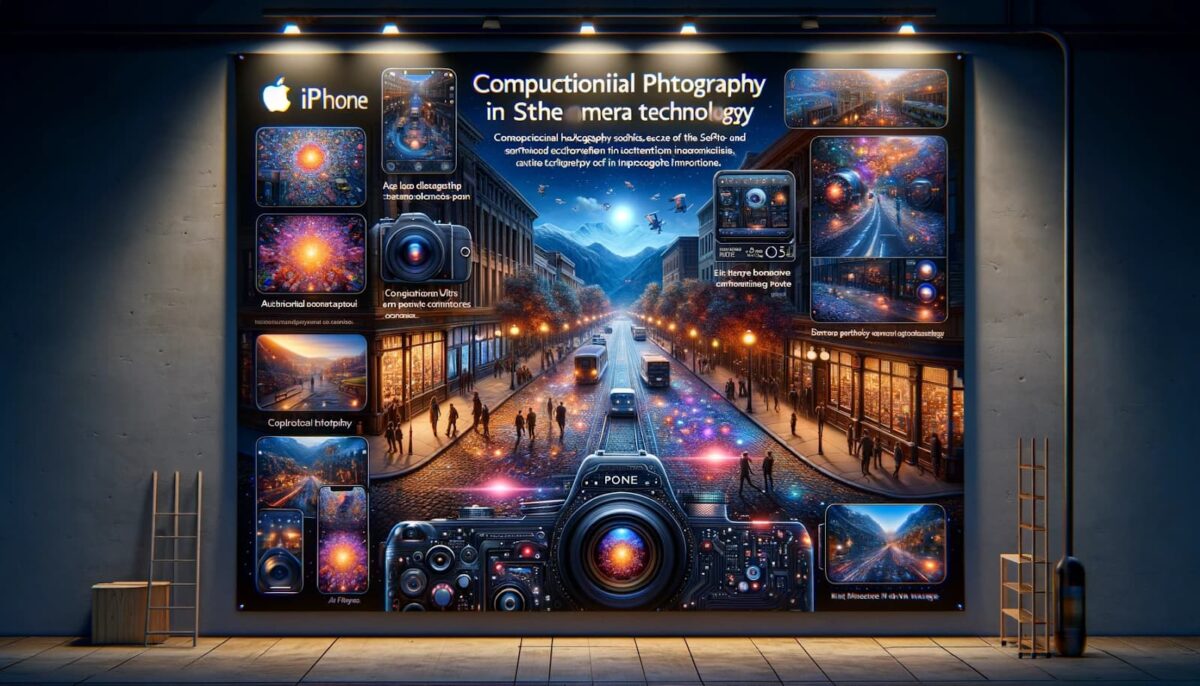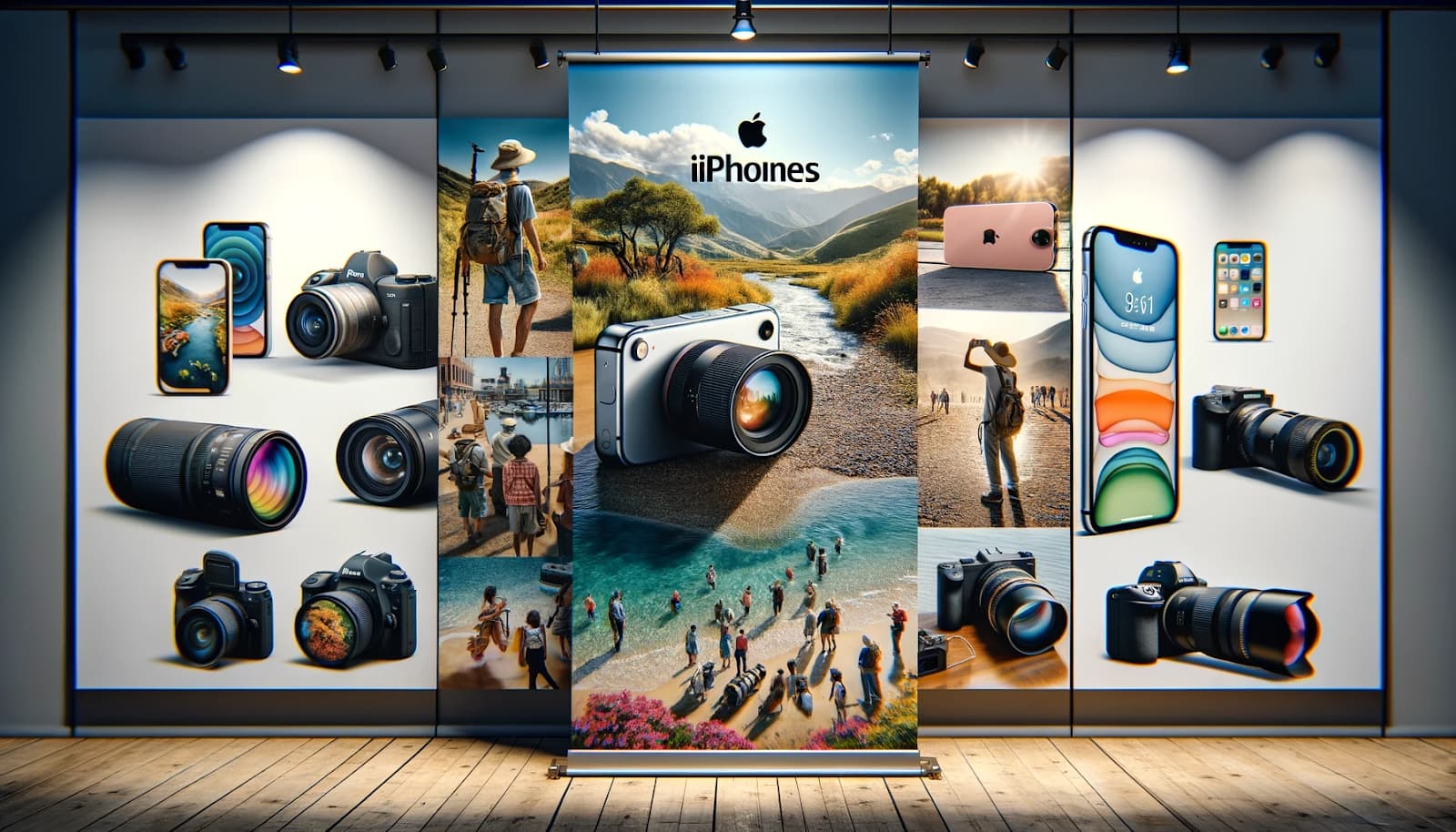In the dynamic landscape of modern technology, Apple has consistently set the benchmark, particularly in smartphone photography. Tracing the journey from the first iPhone to the cutting-edge models of today, it’s evident that Apple has revolutionized camera technology, reshaping our approach to capturing life’s moments. This article aims to shed light on the photographic prowess of Apple’s devices. Alongside this exploration, we’ll also glimpse into the multifaceted functionality of these gadgets, such as their ability to explore Apple Pay options not on Gamstop, broadening the spectrum of user experience beyond the realm of photography.
The Rise of iPhone Photography
The intriguing tale of the iPhone camera demonstrates Apple’s unwavering commitment to innovation. The original iPhone cameras were rather simple, but the multi-lens systems in the most recent models represent a significant technological advance. These devices give customers a variety of photography options, from taking precise telephoto pictures to taking wide-angle pictures. The iPhone is now a tool that can handle a variety of photographic needs and styles thanks to the incorporation of these adaptable lenses.
Apart from the advancements in technology, Apple’s introduction of state-of-the-art image processing techniques has revolutionised the industry. These algorithms make sure that every picture is automatically optimised for the best quality by cleverly adjusting parameters like colour, contrast, and sharpness dependent on the scenario. The images produced by this clever processing are of professional-caliber, vivid, and lifelike, matching the quality of images captured with cameras.
User-Friendly Features for Every Photographer
Focus on Accessibility: Both amateur and expert photographers will find Apple’s camera design to be highly user-friendly. The camera app on the iPhone is renowned for its user-friendly interface, which enables photographers of all experience levels to produce stunning images with ease.
- Democratising High-Quality Photography: By removing barriers that formerly restricted advanced photography to experts, this inclusive approach to design has opened up high-quality photography to a wider audience.
- One feature that really sticks out is the Portrait mode, which gives the iPhone access to professional photography methods. It mimics the appearance of depth-of-field, producing photographs that include crisp subjects against exquisitely blurred backgrounds — a look that was previously limited to DSLR cameras.
- Night Mode: This feature, which allows users to snap detailed and vibrant photographs in low light, is another example of Apple’s creativity. This makes taking night photos easier by doing away with the need for extra gear like lights and tripods.
- Introduction to the ProRAW Format: Adding the ProRAW format gives photographers even more editing options. With the use of this function, which combines Apple’s cutting-edge computational photography with the extensive data of RAW files, photographers, whether professional or novice, may effectively refine their photographs.
Comparing Apple’s Cameras with Professional Equipment
The two main points of contention in the comparison between professional and Apple iPhone cameras are image quality and usability. Professional cameras are known for their outstanding image quality, and this includes DSLRs and mirrorless devices. They have bigger sensors with better low-light performance and the ability to capture finer details. Additionally, these cameras have extensive manual options that allow photographers to fine-tune parameters like ISO, shutter speed, and aperture to achieve greater creative and technical precision.

On the other hand, iPhones are unique in that they are easy to use and convenient. Due to its small size, an iPhone may be taken anywhere and at any time, negating the need for heavy equipment. iPhones make it easy to integrate a wide range of apps and services, which makes editing and sharing images easier. Because of its accessibility, a relevant question is raised: in what circumstances — typically associated with professional cameras — can an iPhone suffice? An iPhone frequently works well enough for everyday photography requirements, such as those for social media and specific professional settings like journalism. Yet, professional equipment is still the best option for jobs requiring precise creative control or high-resolution photos.
The Role of Software in Photography
The cutting-edge software on Apple’s iPhones, especially in computational photography, sets them apart in the world of photography. This technology demonstrates Apple’s leadership in innovation. In computational photography, the capabilities of camera hardware are improved by the use of software algorithms. This is best demonstrated by features found in iPhones, such as HDR (High Dynamic Range), Smart HDR, Deep Fusion, and Night mode.
iPhones may now accomplish tasks beyond the capabilities of conventional cameras thanks to these software-driven functionalities. For example, Smart HDR combines several images with various exposures to produce a single picture with well-balanced highlights and shadows, giving the image more depth and richness. Deep Fusion processes each pixel using machine learning to maximise texture and detail under different lighting scenarios. The potential of night mode to improve low-light photography by lowering noise and enhancing colour accuracy and detail is particularly noteworthy. In order to achieve the best results, iPhones also use AI and machine learning to automatically modify camera settings based on the scene. Regardless of the illumination, the final result of this clever processing is usually a picture that is clean, bright, and well-adjusted.
Real-World Applications and Testimonials
Around the world, people in a variety of occupations and pastimes use iPhones for photography:
- Travel bloggers: Since iPhones are lightweight and portable and can quickly take excellent photos — which are crucial for recording their travels — many travel bloggers choose to use them.
- Journalists: For on-the-spot reporting, journalists frequently use iPhones. They can quickly seize noteworthy events as they happen thanks to their easy access to a top-notch camera.
- Everyday Enthusiasts: Because of the iPhone’s quality and ease of use, casual photographers and regular users regularly resort to it for their everyday photography needs.
Even though iPhones are incredibly powerful devices, in some situations professional cameras are a better fit:
- Very High Dynamic Range and Low Light Scenarios: Professional cameras with bigger sensors capture a greater dynamic range and perform better in low light.
- Specialised Photography: Professional cameras come equipped with capabilities and lenses that are essential for specialised photography such as astrophotography, sports, and wildlife photography.
- Creative Control and Detail: For fine art or highly detailed photography, professional equipment provides more manual control over settings and higher resolution.
Depending on their individual demands and the type of photography they do, photographers must weigh these restrictions when choosing between an iPhone and a professional camera.
The Future of Photography with Apple
Apple continues to invest in camera technology, which should lead to fascinating advances in the future. More sophisticated AI capabilities for even better picture processing, advancements in low-light photography, and possibly even more potent zoom capabilities are anticipated future features. It is anticipated that these developments would push the limits of mobile photography, possibly making iPhones competitive with high-end cameras in more situations. The ongoing advancements in Apple’s camera technology portend a time when consumers will have access to ever-more-advanced tools to capture their surroundings, as the divide between professional and smartphone photography continues to close.
Beyond only improving the user experience, Apple’s photographic innovations have a big impact on the larger photography market.
- Establishing Industry Standards: Apple’s inventions frequently raise the bar for other smartphone makers, encouraging them to improve their camera systems.
- Influencing Camera Development: Traditional camera makers are forced to incorporate comparable features, such as artificial intelligence (AI) and computational photography, into their products as smartphones becoming more powerful.
- Customer Expectations are Changing: Customers’ expectations are being shaped by the quality and convenience of iPhone cameras, which is creating a need for more sophisticated and user-friendly cameras on the market.
The entire photography business is changing as a result of Apple’s advancements, which are redefining what amateur and professional photographers expect from their gear.

